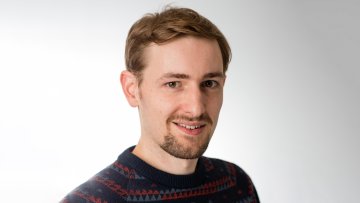Oxford Mathematician James Newton has been awarded a UKRI (UK Research and Innovation) Future Leaders Fellowship.
14:15
Stability conditions for polarised varieties
Abstract
A central theme of complex geometry is the relationship between differential-geometric PDEs and algebro-geometric notions of stability. Examples include Hermitian Yang-Mills connections and Kähler-Einstein metrics on the PDE side, and slope stability and K-stability on the algebro-geometric side. I will describe a general framework associating geometric PDEs on complex manifolds to notions of stability, and will sketch a proof showing that existence of solutions is equivalent to stability in a model case. The framework can be seen as an analogue in the setting of varieties of Bridgeland's stability conditions on triangulated categories.
14:15
Higher rank DT theory from curve counting
Abstract
Fix a Calabi-Yau 3-fold X. Its DT invariants count stable bundles and sheaves on X. The generalised DT invariants of Joyce-Song count semistable bundles and sheaves on X. I will describe work with Soheyla Feyzbakhsh showing these generalised DT invariants in any rank r can be written in terms of rank 1 invariants. By the MNOP conjecture the latter are determined by the GW invariants of X.
Along the way we also show they are determined by rank 0 invariants counting sheaves supported on surfaces in X. These invariants are predicted by S-duality to be governed by (vector-valued, mock) modular forms.
Minimal surfaces, spectral geometry and homogenisation
Abstract
Free boundary minimal surfaces are a notoriously elusive object in geometric analysis. From 2011, Fraser and Schoen's research program found a relationship between free boundary minimal surfaces in unit balls and metrics which maximise the first nontrivial Steklov eigenvalue. In this talk, I will explain how we can adapt homogenisation theory, a branch of applied mathematics, to a geometric setting in order to obtain surfaces with first Steklov eigenvalue as large as possible, and how it leads to the existence of free boundary minimal surfaces which were previously thought not to exist.
14:00
Classical field theory on quantum principal bundles
Please note unusual time.
Abstract
In his very first note on noncommutative differential geometry, Connes
showed that the position and momentum operators on the line could be used to
construct constant curvature connections over an irrational noncommutative
2-torus $\mathcal{A}_\theta$. When $\theta$ is a quadratic irrationality,
this yields, in particular, constant curvature connections on non-trivial
noncommutative line bundles---is there an underlying monopole on some
non-trivial noncommutative principal $U(1)$-bundle? We use this case study
to illustrate how approaches to quantum principal bundles introduced by
Brzeziński–Majid and Đurđević, respectively, can be fruitfully synthesized
to reframe classical gauge theory on quantum principal bundles in terms of
synthesis of total spaces (as noncommutative manifolds) from vertical and
horizontal geometric data.
The Mathematical Institute, Department of Computer Science and the Department of Statistics at the University of Oxford are consistently ranked amongst the very best mathematical sciences and computer science departments in the world, for both teaching and research. We are committed to attracting the world’s most talented students and working with them, to help them maximise their potential, regardless of race, gender, religion or background.
12:00
Wick rotation and the axiomatisation of quantum field theory
Abstract
I shall present joint work with Maxim Kontsevich describing an interesting
domain of complex metrics on a smooth manifold. It is a complexification of
the space of ordinary Riemannian metrics, and has the Lorentzian metrics
(but not metrics of other signatures) on its boundary. Use of the domain
leads to a modified axiom system for QFT which illuminates not only the
special role of Lorentz signature, but also of features such as local
commutativity, unitarity, and global hyperbolicity.
12:00
Quantized twistors and split octonions
Abstract
The non-compact exceptional simple group G_2* turns out to be the symmetry group of quantized twistor theory. Certain implications of this remarkable fact will be explored in this talk.




